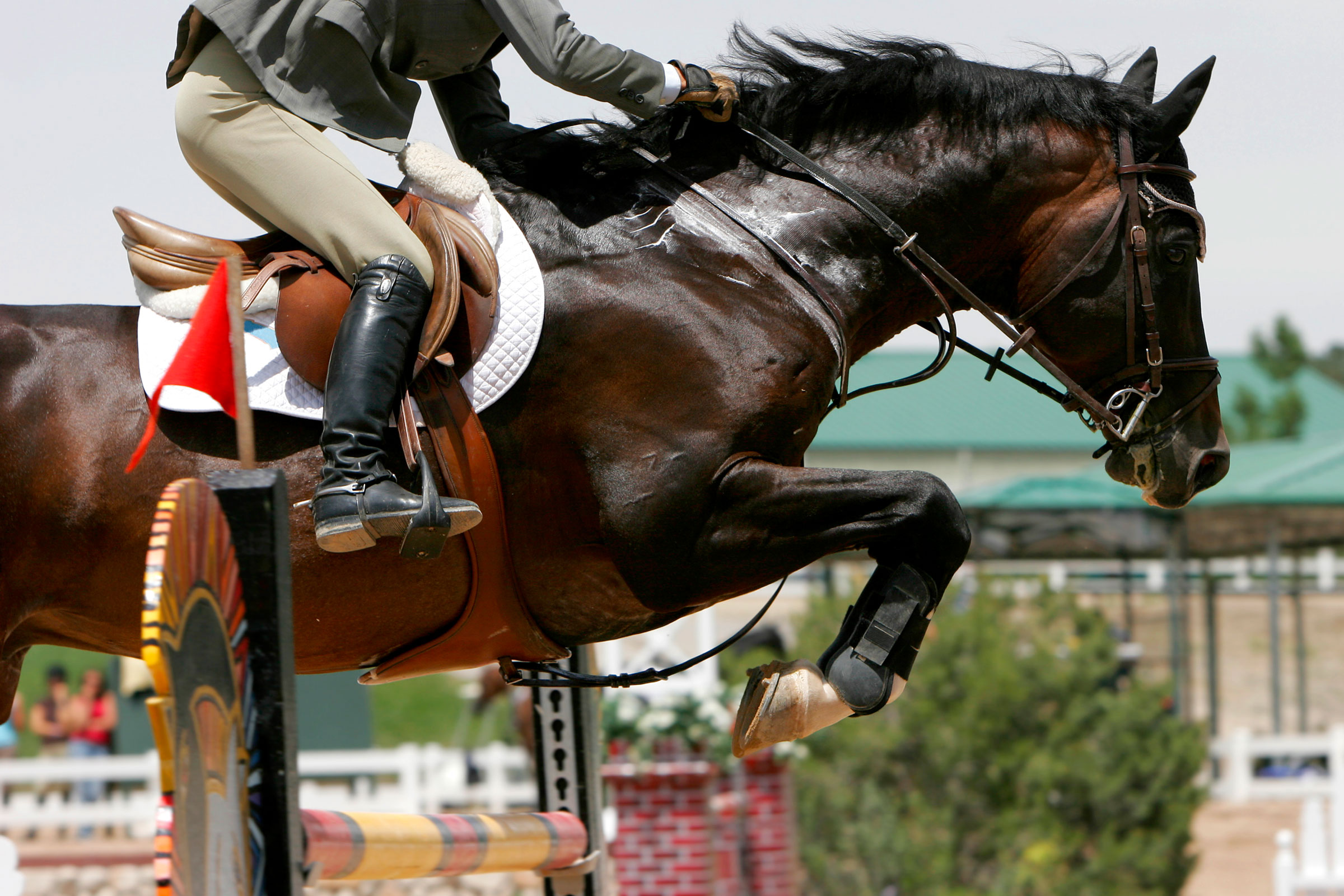
As you are riding, you might feel sweat trickling down your head beneath your helmet. A hot summer day might feel like a perfect time to ride, but it’s important to be cognizant of how much effort your horse is putting out. When ambient temperature and humidity rise to certain levels, your horse might be in danger of developing heat stress, especially when hot weather is coupled with arduous and/or prolonged exertions. A hot day without humidity can also pose a risk.
A horse demonstrating signs of heat stress – either subtle or obvious – should be evaluated carefully as a precaution to prevent metabolic collapse. If you recognize any of the following signs, it is probably time for your horse to take a break, and for you to call it a day.
Locomotion
- Flagging body posture under saddle
- Need to urge horse to maintain speed
- Stride flattens out
- Poor impulsion
- Stumbling
- Ataxic (incoordination) or weak
Attitude and Posture
- Grumpy disposition when handled
- Grumpy when asked to perform
- Lack of alertness or interest in surroundings
- Dull or glazed eyes
- Sagging or deflated posture at rest
- Wrinkled lips
- Ears at half-mast
- Anxious expression
Body Functions
- Waning or absent appetite
- Lack of thirst
- Reduced or absence of urination
- Reduced or absence of bowel movements
- Decreased intestinal sounds
Overt Problems
- Tying-up syndrome (myositis)
- Thumps (synchronous diaphragmatic flutter)
- Colic
- Neurologic signs
Vital Signs
In addition to your horse’s display of posture, attitude, mood and intake of food and water, you can check vital signs to determine how well he is coping with the exercise demand and climate conditions of the day.
Heart rate (or pulse) Your horse’s pulse, or heart rate (measured in beats per minute), gives information about how well he’s recovering from exercise. The heart rate should return to about 60 to 64 beats per minute within 10 minutes of stopping exercise. Poor heart rate recovery may signal impending metabolic collapse due to the combined effects of energy depletion, electrolyte loss, and heat build-up in the muscles.
Respiration The respiratory rate (breaths per minute) should return to normal within 10 minutes of stopping exercise. If the heart rate returns to 60 bpm or below within 10 minutes, but the respiratory rate remains elevated, such an inversion does not necessarily imply your horse is in trouble. It means he needs help in ridding his body of the extra heat. If your horse is panting, there may be nothing abnormal about the horse other than having bigger, bulkier muscles than a leaner-muscled breed. In other cases, it is a true reflection of limited fitness or being asked too much for the conditions of the day. Respiratory rate is a useful means of evaluating a horse’s ability to cope with the exercise demand, the pace, and the weather.
Gum color and capillary refill time Lift the horse’s upper lip to evaluate the gums – they should be moist and pink, like under your pinky nail. Press gently to blanche away the color and the gums should pink up again within two seconds. Slow capillary refill time and/or lack of moistness indicate dehydration.
Skin turgor To roughly estimate dehydration, pinch a fold of skin on the point of the shoulder or the upper eyelid. It should snap back into position immediately. If it doesn’t return to its normal position and remains “tented,” the horse is likely 3-5% dehydration. Pinching skin on the neck is not a reliable indicator of dehydration.
Rectal temperature Exercise will normally elevate rectal temperature to 101- 103 degrees Fahrenheit. A horse with a rectal temperature over 103.5 degrees F needs to be managed with cooling techniques. Once exercise is stopped, rectal temperature should decline steadily over 15 to 20 minutes. Rectal temperature exceeding 105 degrees F is dangerous, requiring immediate and aggressive cooling measures. At 106 degrees, there can be kidney, liver, and brain damage. Rectal temperatures greater than 107 degrees can lead to convulsions, coma or death.


